
What is Business Intelligence?
The term BI or business intelligence is everywhere these days. Not surprisingly, BI is vital for companies to work in a data-driven way. But what exactly is business intelligence? And what do you need to get started? We will tell you in this blog!

Getting more value from data
Just think how much data you record or view in different systems daily. You have data in the ERP system, in planning tools, data on employees in personnel administration, logistics data and so on. In short, you collect gigantic amounts of data from business processes. This data is packed with valuable insights, but the trick is to use this data as a basis for decisions. That is precisely what BI stands for – turning data into useful information so you can make well-considered decisions. Thanks to business intelligence, you can move from making decisions based on gut feelings to making decisions based on facts.
Getting started with BI: the building blocks
Sounds good, but how to get started? To give you an idea of what you need to put data to work for your construction company, we list some essential BI building blocks for you.
1. Bringing data from business processes together in an ERP package
To implement business intelligence, gathering data from business processes in a central location is crucial. To achieve this, an ERP solution is necessary. Collecting all data related to business processes, including tendering and aftercare, in a central database will give you a solid starting point for data analysis and dashboards. While business intelligence focuses on converting data into insights, an ERP solution ensures you digitally collect the necessary data in one location.
2. Invest in clean data
Okay, the data is in an ERP solution. Ready for analysis, right? Not quite. It is essential that you pay continued attention to cleaning the data. The expression ‘Garbage in, garbage out’ also applies to BI. You will only get valuable insights from data if this data is current, clean and relevant. So ensure that everyone records all data from the business processes in the ERP system correctly. In this phase, it is also good to check which other systems contain data of interest to the company. Are these systems already linked to the ERP solution? Ask your ERP supplier about the possibilities of linking external systems to the ERP package via, for example, an API. This way, you bring all the data together in a total solution.
3. Visualising data with an appropriate BI solution
By collecting all data in one total solution, you take an essential step towards more insights. From an ERP solution, you often have standard access to many reports. These reports give you insight into all project-level open items, for instance. But do you want to go one step further? Then you cannot do without suitable BI tooling! Are you still looking for a practical BI solution for your company? The following questions will help you find the right solution:
- Does the BI tooling fit well with the ERP solution?
Does the BI solution integrate with your ERP solution by default, or do you need to have a customised interface designed? In your search, consider which other data sources can quickly link to your BI solution. Here, it is essential to choose a solution that easily integrates with other systems; this will prevent you from building additional customised links! - How user-friendly is the BI tooling?
Business intelligence and data analysis is a profession in its own right. But not every company employs a data guru. Therefore, opting for a user-friendly and approachable solution where anyone can get started is a good idea. Think of Microsoft Power BI, part of the Microsoft Power Platform. - Can I also view my reports and dashboards on a tablet or smartphone?
For project managers, service engineers or team leaders in the construction industry, reports must be available anytime and anywhere. After all, they regularly work on-site but want to keep a finger on the pulse of other projects or service locations. So a cloud-based solution that works perfectly on a mobile or tablet is certainly not an unnecessary luxury. - What are the additional costs for a BI solution?
BI tools are a significant investment, but did you know that Power BI is included with specific Microsoft 365 licences? So always check first whether your company does not already have access to BI tooling via your Microsoft 365 licence. That may save you a lot of extra costs.
How good is your foundation?
Is your construction company also ready to work data-driven? Would you like to know more about the added value of data-driven working in the construction industry? Then also download our whitepaper “Five Reasons to be Data-Driven in Construction”, where we show you why BI is also the key to future success for construction companies!
-
Share:

Elliot Herdman | Elliot has over 20 years experience in the construction industry working with main contractors, subcontractors, M&E, supply and install analysing their business processes and implementing digital software solutions to improve projects, drive efficiencies and meet the growing needs of clients.
